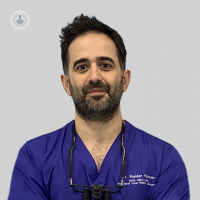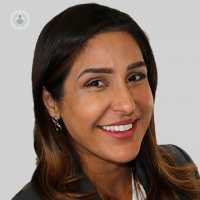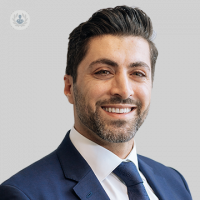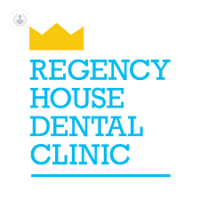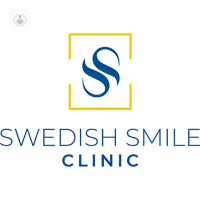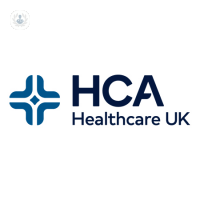What is facial aesthetics?
The natural ageing process, lifestyle factors and the environment all contribute to unwanted wrinkles, fine lines, age spots and uneven skin tones.
Facial aesthetics, otherwise known as facial rejuvenation treatments is the term used to describe non-surgical procedures that reduce the signs of ageing on the face.
Why would someone need facial aesthetic treatments?
Facial aesthetic treatments are used to give people a more youthful and radiant appearance. These treatments can soften wrinkles, contour the face and define certain facial features.
What does facial aesthetics involve?
There are a number of facial aesthetic treatments to reduce ageing and enhance facial features. Some of which include:
Wrinkle reduction
Otherwise known as Botox, this involves injecting a natural substance derived from a micro-organism which relaxes muscles and reduces the appearance of fine lines and wrinkles, like frown lines that appear between the eyes, crow’s feet and forehead lines.
Dermal fillers
Dermal fillers offer a safe and natural cosmetic treatment to restore volume and fullness to the skin and improve the skin’s appearance. This is ideal for deeper lines and wrinkles. Fillers can also be used to improve the definition of facial features like the lips and cheeks so that they appear fuller.
Automated percutaneous collagen induction therapy (PCI)
PCI or microneedling is a procedure where small, sterile needles perforate the upper and mid-layers of the skin causing micro-trauma. The needle prick wounds induce a healing process that stimulates skin cells to produce new collagen and skin cells. Results are immediate and natural, with two or three sessions normally being required to achieve the desired result.
Platelet-rich concentrate (PRC)
PRC is a natural healing serum that we carry in our blood. By isolating PRC from our blood, we can use this to stimulate skin cells to produce collagen and elastin to give us more youthful skin.
Combining PCI and PRC therapies works well and these treatments are non-invasive and natural, eliminating the risk of an allergic reaction to man-made treatments. These treatments do however require a series of sessions, spaced out over a number of weeks.
How do I prepare for facial aesthetics?
Before any aesthetic procedure, your doctor will talk to you about your medical history, discuss your concerns and assess your skin and skincare regime. They will then suggest the most suitable treatments for you and develop a treatment plan from there.
Some treatments such as Botox are not suitable for pregnant or breastfeeding women.
What does post-operative care look like?
Post-operative care depends on the procedure undertaken but in comparison to surgical procedures for facial rejuvenation such as a facelift, recovery time is much faster. Usually, patients can return to normal activity on the same day or the day after the procedure.
Possible side effects to Botox might include pain and tenderness around the injection site, headaches, flu-like symptoms, a droopy eyelid or a crooked smile. If symptoms persist for a long period of time, revisit your doctor for a check-up.
08-11-2023Facial aesthetics
What is facial aesthetics?
The natural ageing process, lifestyle factors and the environment all contribute to unwanted wrinkles, fine lines, age spots and uneven skin tones.
Facial aesthetics, otherwise known as facial rejuvenation treatments is the term used to describe non-surgical procedures that reduce the signs of ageing on the face.
Why would someone need facial aesthetic treatments?
Facial aesthetic treatments are used to give people a more youthful and radiant appearance. These treatments can soften wrinkles, contour the face and define certain facial features.
What does facial aesthetics involve?
There are a number of facial aesthetic treatments to reduce ageing and enhance facial features. Some of which include:
Wrinkle reduction
Otherwise known as Botox, this involves injecting a natural substance derived from a micro-organism which relaxes muscles and reduces the appearance of fine lines and wrinkles, like frown lines that appear between the eyes, crow’s feet and forehead lines.
Dermal fillers
Dermal fillers offer a safe and natural cosmetic treatment to restore volume and fullness to the skin and improve the skin’s appearance. This is ideal for deeper lines and wrinkles. Fillers can also be used to improve the definition of facial features like the lips and cheeks so that they appear fuller.
Automated percutaneous collagen induction therapy (PCI)
PCI or microneedling is a procedure where small, sterile needles perforate the upper and mid-layers of the skin causing micro-trauma. The needle prick wounds induce a healing process that stimulates skin cells to produce new collagen and skin cells. Results are immediate and natural, with two or three sessions normally being required to achieve the desired result.
Platelet-rich concentrate (PRC)
PRC is a natural healing serum that we carry in our blood. By isolating PRC from our blood, we can use this to stimulate skin cells to produce collagen and elastin to give us more youthful skin.
Combining PCI and PRC therapies works well and these treatments are non-invasive and natural, eliminating the risk of an allergic reaction to man-made treatments. These treatments do however require a series of sessions, spaced out over a number of weeks.
How do I prepare for facial aesthetics?
Before any aesthetic procedure, your doctor will talk to you about your medical history, discuss your concerns and assess your skin and skincare regime. They will then suggest the most suitable treatments for you and develop a treatment plan from there.
Some treatments such as Botox are not suitable for pregnant or breastfeeding women.
What does post-operative care look like?
Post-operative care depends on the procedure undertaken but in comparison to surgical procedures for facial rejuvenation such as a facelift, recovery time is much faster. Usually, patients can return to normal activity on the same day or the day after the procedure.
Possible side effects to Botox might include pain and tenderness around the injection site, headaches, flu-like symptoms, a droopy eyelid or a crooked smile. If symptoms persist for a long period of time, revisit your doctor for a check-up.
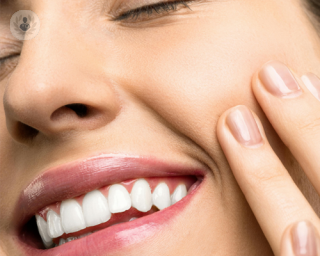

What are the advantages of NeoGen Plasma treatment?
Por Dr Raj Thethi
2024-11-21
NeoGen Plasma treatment is a cutting-edge technology in aesthetic medicine, offering a range of benefits for skin rejuvenation and enhancement. This non-surgical procedure uses plasma energy to stimulate the skin's natural regeneration process, leading to significant improvements in skin texture, tone and overall appearance. Here to provide a detailed look at what makes NeoGen Plasma an attractive treatment is leading facial aesthetician and medical director of Yorkshire Skin Centre, Dr Raj Thethi. Ver más
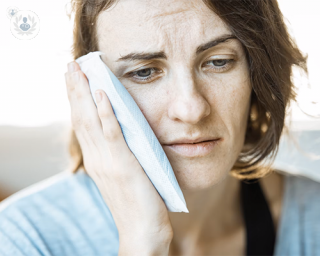

What to know about facial injuries after accidents
Por Professor Kavin Andi
2024-11-21
In this article, Professor Kavin Andi, a highly experienced and distinguished consultant oral and maxillofacial surgeon, talks to us all about facial injuries after an accident, detailing how they are typically treated. Ver más


Blepharoplasty: Frequently-asked questions
Por Mr Ahid Abood
2024-11-20
Esteemed consultant plastic, reconstructive and cosmetic surgeon Mr Ahid Abood details how a blepharoplasty procedure is performed, and who the ideal candidate for the surgery is. Ver más
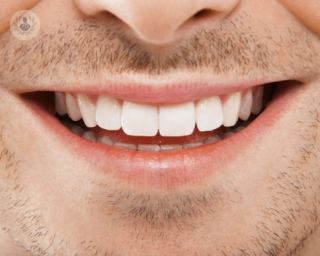

What are the different types of cosmetic dentistry?
Por Dr Olurotimi Adesanya MBE
2024-11-20
If you are looking for a boost of confidence to your smile but feel confused or overwhelmed by all the cosmetic treatments to choose from, this article may be able to help you make your mind up. Dr Olurotimi Adesanya has put together this quick guide of the different types of cosmetic treatments available. Ver más
Doctores expertos en Facial aesthetics
-
Dr Haidar Hassan
Odontología y estomatologíaExperto en:
- Cirugía Oral
- Implantes dentales
- Reconstrucción ósea
- Facial aesthetics
- Muelas del juicio
- Toxina Botulínica (Botox)
-
Dr Peter McQuillan
Odontología y estomatologíaExperto en:
- Estética dental
- Invisalign®
- Carillas
- Facial aesthetics
- Carillas de composite
- Blanqueamiento dental
-
Dr Aneka Khaira
Odontología y estomatologíaExperto en:
- Carillas
- Invisalign®
- Sistema Damon
- Carillas de composite
- Facial aesthetics
- Blanqueamiento dental
-
Dr Natasha Panesar
Odontología y estomatologíaExperto en:
- Estética dental
- CAD-CAM (diseño de la sonrisa)
- Carillas
- Carillas de composite
- Invisalign®
- Facial aesthetics
-
Dr Rejin Khafaf
Odontología y estomatologíaExperto en:
- Estética dental
- Invisalign®
- Implantes dentales
- Carillas de composite
- Blanqueamiento dental
- Facial aesthetics
- Ver todos

Regency House Dental Clinic
Regency House Dental Clinic
28 St Peter's St, St Albans AL1 3NA
No existe teléfono en el centro.
Si haces uso de este teléfono facilitado por TOP DOCTORS nos autorizas al tratamiento de tu teléfono para fines estadísticos y comerciales. Para más información, lee nuestra Política de Privacidad
Top Doctors

Swedish Smile Clinic
Swedish Smile Clinic
35 Devonshire Pl, Marylebone, London W1G 6JP
No existe teléfono en el centro.
Si haces uso de este teléfono facilitado por TOP DOCTORS nos autorizas al tratamiento de tu teléfono para fines estadísticos y comerciales. Para más información, lee nuestra Política de Privacidad
Top Doctors

The Lister Hospital - part of HCA Healthcare
The Lister Hospital - part of HCA Healthcare
Chelsea Bridge Road, London
No existe teléfono en el centro.
Si haces uso de este teléfono facilitado por TOP DOCTORS nos autorizas al tratamiento de tu teléfono para fines estadísticos y comerciales. Para más información, lee nuestra Política de Privacidad
Top Doctors
-
Regency House Dental Clinic
28 St Peter's St, St Albans AL1 3NA, St AlbansExperto en:
- Brackets
- Corona
- Estética dental
- Implantología
- Odontología general
- Odontopediatría
-
Swedish Smile Clinic
35 Devonshire Pl, Marylebone, London W1G 6JP, W1G Marylebone LondonExperto en:
- Carillas de porcelana
- Estética dental
- Implantología
-
The Lister Hospital - part of HCA Healthcare
Chelsea Bridge Road, London , Central LondonExperto en:
- Cáncer
- Cardiología
- Cirugía ortopédica
- El embarazo
- Fisioterapia
- La salud de la mujer
- Ver todos
